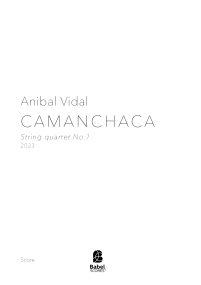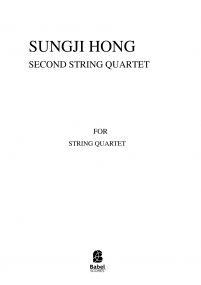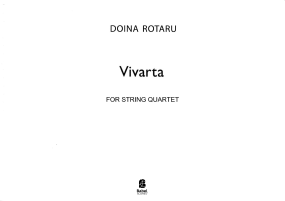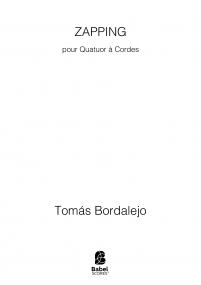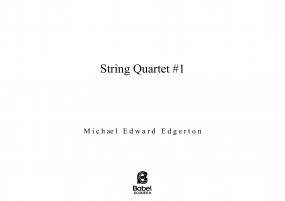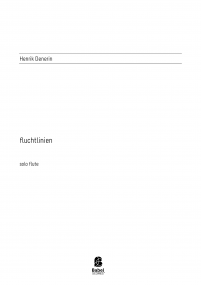La gran soledad: String Quartet no. 2
ISMN : 979-0-2325-7588-9
- Identifiez-vous pour créer une liste
I The sea devours our grids and our lives
II Monologue (in shadow)
III There’s a whispering immensity awake in these lifeless stones
IV Dialogue (with echo)
V1 Diacope (Anaphora / Anadiplosis) | V2 Burden | V3 Dactyls (en séance avec Rube Goldberg)
VI Epilogue (in apostrophe)
La gran soledad — vast solitude — is a pervasive theme in La luz dificil by the Colombian writer Tomás Gonzalez. In the novel, David, an elderly painter rapidly descending into blindness, reflects on the death of his son some twenty years in the past. The narration shifts periodically across the decades in a way that disrupts the successive arrow of time and demonstrates that past memory and present experience continuously permeate one another. In his grief, David frames the world with a painter’s eye. At one point he recalls finding an abandoned motorcycle slowly disintegrating on a beach. This image of an inhuman beauty arising out of the conflux of rigidly mechanical design and fluid natural force is striking.
We might normally consider the capacity to experience beauty a distinctly human affair, what sets us apart from creatures whose only concern is mere survival. Similarly, we might think that strict, mechanical grids are characteristically inhuman. But nature does not show a preference for grids; it is we who find 90° angles to be somehow “right.” To celebrate the dissolution of grids is to come to terms with death, with the end of our distinctness from the world, with the return to inorganic nature. I suppose there is some beauty in this recognition, but it is a harsh beauty, a truly difficult light. I bring this up only as an attempt to work through the death of a close friend of mine. His death was sudden, and because his family could not access the contacts list on his phone, relying instead on social media platforms I had long since departed, I only learned of it after his funeral.
Michel de Montaigne, channeling Cicero, once wrote that “to philosophize is to learn how to die.” The same could be said for composing music. Every piece is a life lived in miniature, an itinerary spanning the birth of new forms and their ultimate dissolution. And so it is with this piece, in which assorted musical grids pass over into oceanic textures. Along the way, the various movements resonate with writers who have been important to my life. Sappho’s shadow dwells in the fragment quoted by Aristotle and the meditations of Sylvia Plath, as the cello adumbrates the violin in the second movement. Movement three imagines stumbling upon the forest scene described by Bashō more than three centuries later, where if you listen closely, you might be able to hear the loneliness of the cicadas still murmuring in the rocks. The episode that follows reflects on the notion that love is as intangible as an echo, the presence of an absence, the “after-image of sacrifice.” Sappho’s shadow makes a final appearance in movement five; there is a certain pithy humor in her aphorism that reminds me of the laconic one-liner delivery of the late stand-up comic Mitch Hedberg. For me, the power of her words is in this elusive comedic quality, the way she wryly transforms the malaise of mortality into pleasure by virtue of the absurd. Perhaps Gonzalez had this sort of transformation in mind when he wrote “my vast solitude was suddenly filled with the entire universe.”
Cello
Violin I
Violin II
Pages - 50




